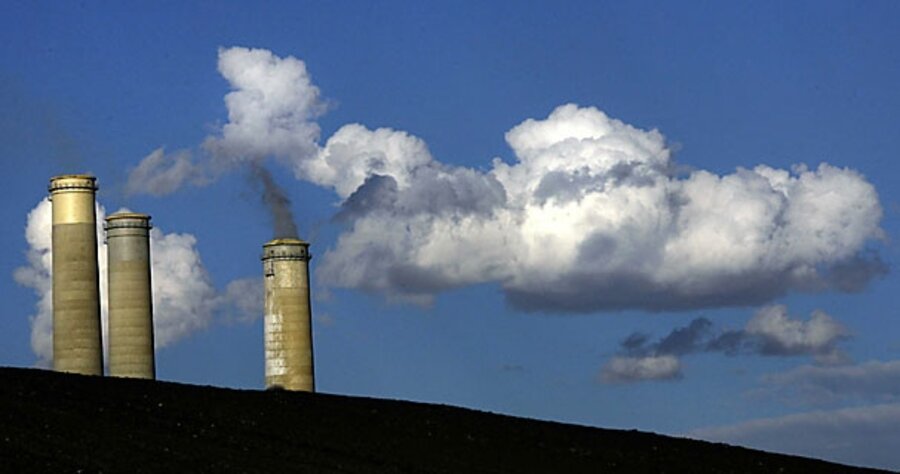Western states propose cap-and-trade system for greenhouse gases
Loading...
| Oakland, Calif.
Facing the absence of a national plan for reducing greenhouse gases, a group of Western states and Canadian provinces put their own regional proposal on the table Wednesday.
The Western Climate Initiative (WCI), which represents one-fifth of the US economy and most of Canada’s, aims to cut the region’s greenhouse-gas emissions so that by 2020 emissions will be 15 percent lower than 2005 levels.
But the system is not seamless. Although it will feature a single regional market where polluters can shop for the cheapest ways to comply with emissions cuts, it will largely be up to the individual states to decide how to allocate the pain among polluters. The result is a more cost-effective system that will be harder for companies to circumvent, experts say.
A key issue – how many pollution allowances will be given away to industries – remains unresolved.
“If the stake holders get it right, this market will, in my estimate, blow the doors off all other nascent compliance markets in the US. It’s bigger, requires more aggressive cuts, is multisectoral, and multistate. These regulators mean business,” says Josh Margolis, joint CEO of CantorCO2e, a firm that helps companies navigate emissions markets.
The plan has a broad reach, encompassing the sources of about 85 percent of the region’s greenhouse gas emissions. These include electricity providers and manufacturers – and eventually distributors of transport and home heating fuels.
Beginning in 2012, the WCI will start placing these polluters under a cap-and-trade system. The “cap” simply means that a limit will be placed on the amount of greenhouse gases that can be emitted regionwide. Each year, the limit will be ratcheted lower.
The “trading,” meanwhile, comes in the form of allowances. Each allowance permits a polluter the one-time ability to emit a metric ton of a greenhouse gas like carbon dioxide.
Cleaner companies can sell their excess allowances to dirtier ones. And within the WCI these trades can happen across borders. An Oregon allowance will be good in Arizona, and vice-versa, creating a large, unified market.
How the allowances will be initially distributed among states remains a major point of contention, says Charles Kolstad, a professor of environmental economics at the University of California, Santa Barbara.
Even trickier: How will states distribute them to various polluters within their borders? Environmentalists would like to see states auction allowances to polluters while business groups want the allowances allocated freely based on companies’ historic emission levels.
The WCI dodged answering this question by leaving it to each state to decide.
“If you are a state that wants to be flush with money, money that can be used for a variety of purposes not related to climate change, an auction is a fantastic thing because it generates billions of dollars,” says Mr. Margolis. “The problem is, that’s money taken out of the system.”
He argues it’s better for companies to have that money to clean up their operations.
Dr. Kolstad argues that freely handing out allowances can translate into companies just pocketing the money. Instead, governments could return it to consumers who may face higher prices from this system. “There are good things that can be done with that revenue,” Kolstad says.





